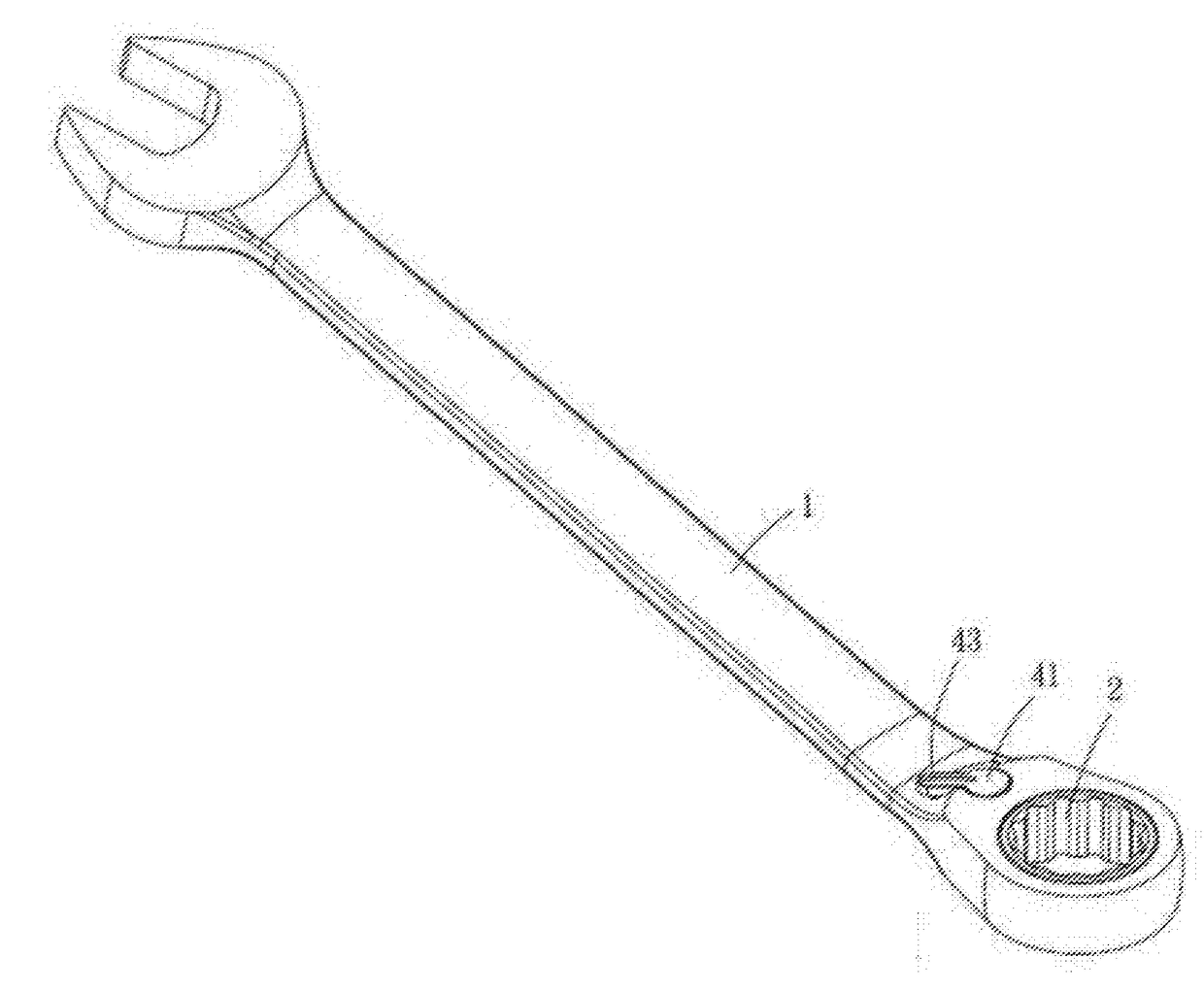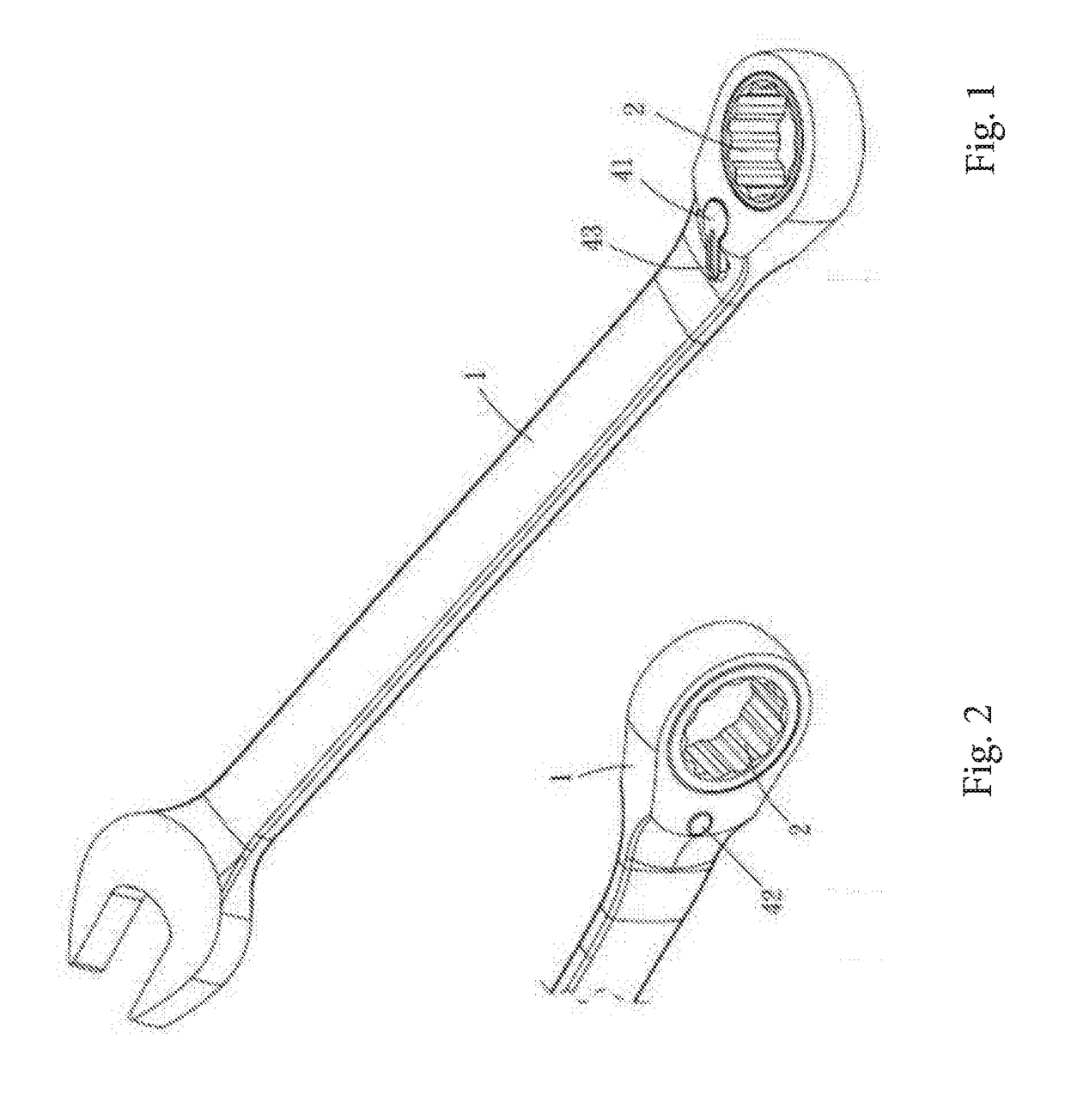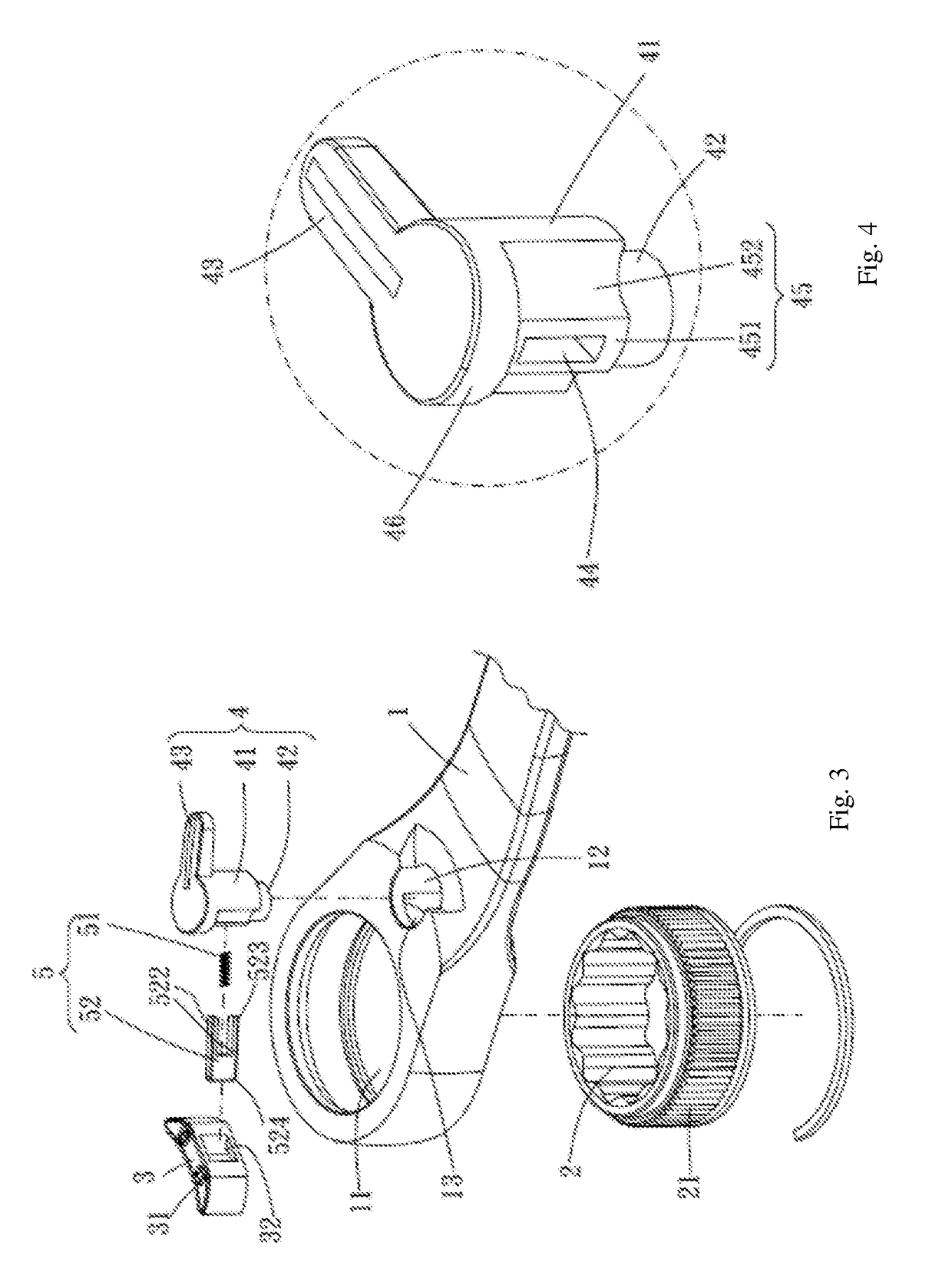Tool with a ratchet mechanism
a ratchet mechanism and tool technology, applied in the field of hand tools, can solve the problem that the user may only be able to rotate the driving member, and achieve the effect of improving work efficiency, stable seating of components, and easy selection of driving mechanisms
- Summary
- Abstract
- Description
- Claims
- Application Information
AI Technical Summary
Benefits of technology
Problems solved by technology
Method used
Image
Examples
Embodiment Construction
[0032]The following is a description of the possible embodiments of the present invention by way of example only, and is not intended to limit the scope of the present invention.
[0033]Please refer to FIGS. 1 to 6, which depict one embodiment of the present invention. The ratchet wrench of the present invention comprises a body 1, a driving member 2, a stopping member 3, a switching member 4, and an elastic abutting assembly 5.
[0034]The body 1 is provided with a first chamber 11, a second chamber 12 adjacent to the first chamber 11, and a third chamber 13 that communicates with the first chamber 11 and the second chamber 12, one of the two ends of the second chamber 12 forming a large diameter section 121, and the other end forming a small diameter section 122.
[0035]The driving member 2 is rotatably provided in the first chamber 11 and is provided with a first pawl portion 21 along the outer peripheral surface. In the present embodiment, the first pawl portion 21 may have, for exampl...
PUM
 Login to View More
Login to View More Abstract
Description
Claims
Application Information
 Login to View More
Login to View More - R&D
- Intellectual Property
- Life Sciences
- Materials
- Tech Scout
- Unparalleled Data Quality
- Higher Quality Content
- 60% Fewer Hallucinations
Browse by: Latest US Patents, China's latest patents, Technical Efficacy Thesaurus, Application Domain, Technology Topic, Popular Technical Reports.
© 2025 PatSnap. All rights reserved.Legal|Privacy policy|Modern Slavery Act Transparency Statement|Sitemap|About US| Contact US: help@patsnap.com



